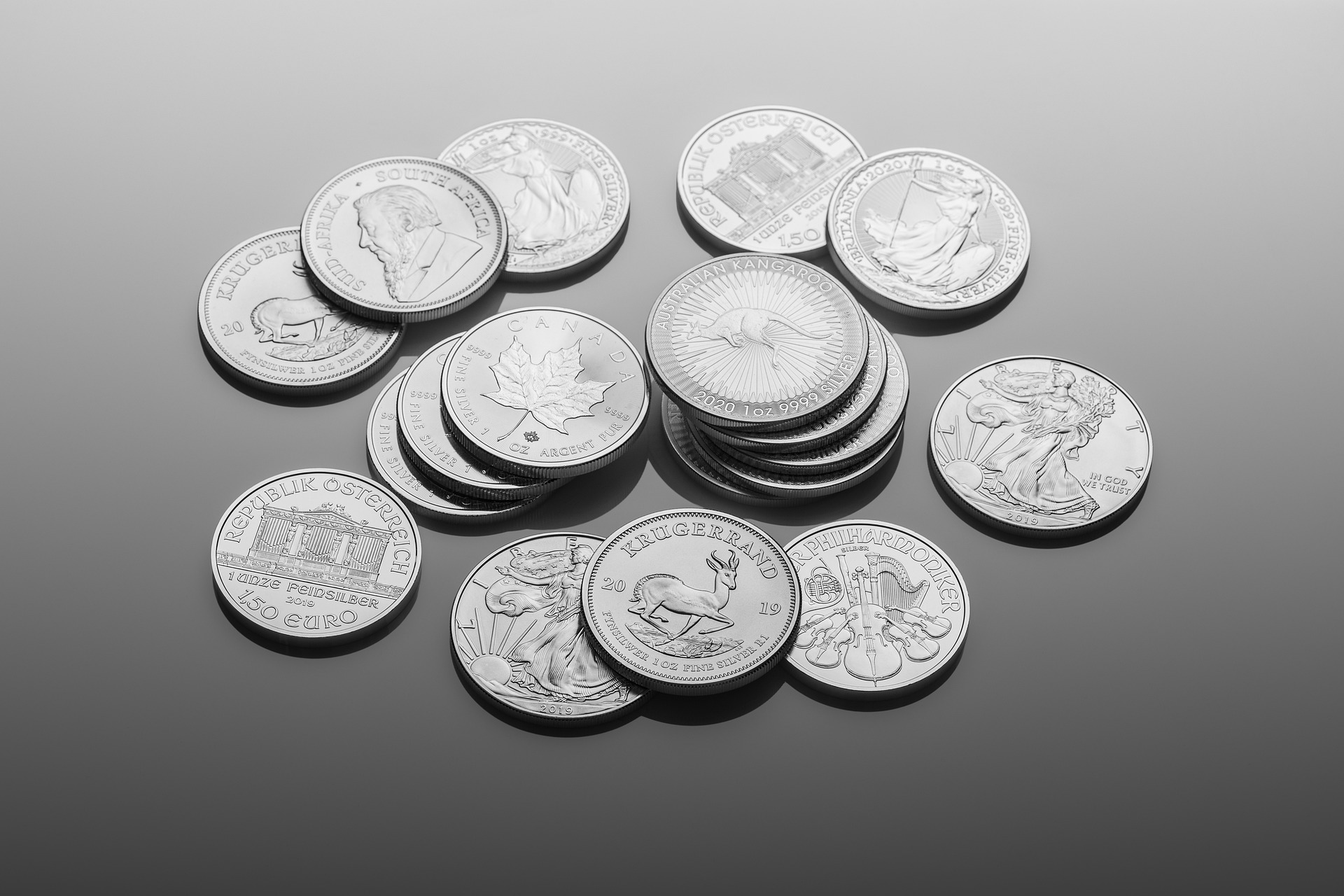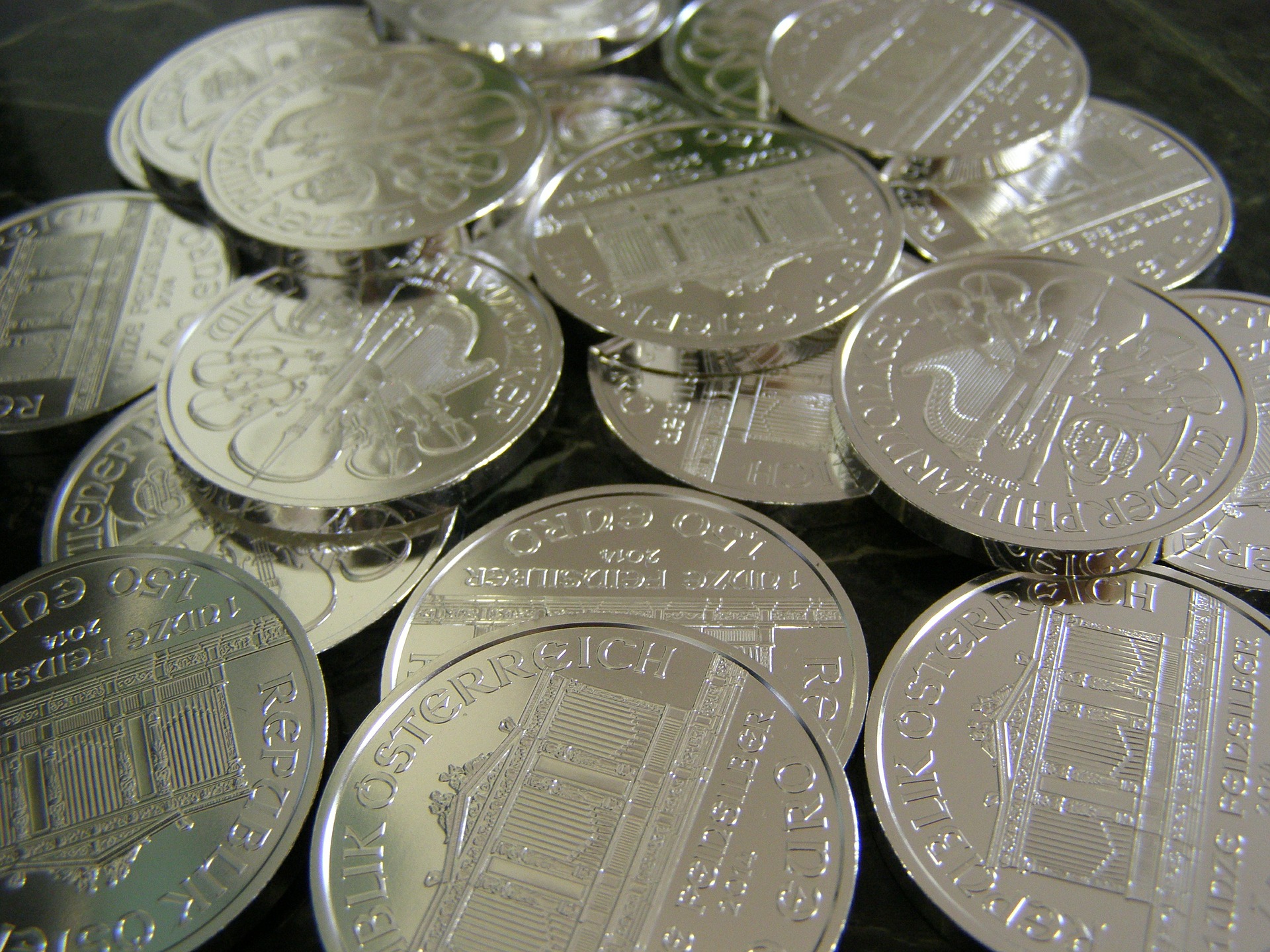Silver coinage: a broad selection of investment pieces and collector's items
Further information » Silver coins: Options for investors and collectors
Silver coins information at a glance
- 10 minutes read
White precious metal is appreciated by beginners and professionals alike
Silver coins offer an investment alternative to gold coins which often has more appeal to investors and numismatists than silver ingots. This is understandable, given that (excepting silver-coin bars) these rectangular investment products present a comparatively plain profile. Furthermore, silver coins can boast a variety of motifs, even upstaging similar gold products. While silver has more than 150 different options aimed primarily at collectors, the range of bullion coins is more manageable, yet still offers a choice of around 30 designs.
In this article we will introduce you to silver coins as an investment option and highlight all their special features. You will also learn what to consider when making a purchase, and what storage arrangements are most appropriate for silver coinage. At first glance, purchasing individual silver investments appears a low-budget option when compared to similar precious metal products in gold, platinum and palladium, but the opportunity to gradually acquire a significant amount means your silver holding has the potential to grow into a valuable asset – which must naturally be kept secure.

Generally speaking, investors and collectors appreciate the sometimes unusual motifs appearing on both coin faces, often making silver coins a particularly sought-after investment. Some images depict wildlife around the globe and famous personalities, or may commemorate important historical events. Many designs are adaptations taken from gold coins, but others appear as silver-only editions year after year. This shimmering white metal can create completely new accents, enhancing the element of contrast in familiar motifs. Elsewhere, real gold overlays, colour highlights or antique finishes are employed to create even greater variety for numismatists.
Buy VAT-free silver from our authorized dealers!
Echtgeld AG in Switzerland:
Victoreanum eG. in Germany:
Famous silver coins around the world
Minting silver coins for investment purposes is a long-established tradition worldwide. One of the oldest and best-known examples is the American Eagle, which the United States Mint first struck back in 1986. The Silver Maple Leaf from the Royal Canadian Mint has also been in circulation since 1988. However, the oldest European silver bullion coin – the Britannia – was issued by the British Royal Mint in 1997. Other coins for which there is a great demand among investors include: the Vienna Philharmonic (2008, Austrian Mint), the Australian Kangaroo (2015, Perth Mint), and, of course, the Krugerrand (2017, Rand Refinery, South Africa).
These bullion coins are immediately recognisable by their motifs, which remain the same year after year, with the year of issue being the only change. This makes them ideal for investors, because they can be easily traded and are thus accepted by precious metal retailers and banks around the world. They appear in large editions often available in different containers: as individual coins, in coin tubes, or in monster boxes containing up to 500 pieces. This makes silver coinage a flexible investment product appreciated by beginners and experienced investors alike.
Investing in common silver coins has many advantages. Their high profile and international distribution has created an enduring reservoir of trust. Furthermore, all the coin issues previously mentioned are traded relatively close to the silver price. Their premiums are thus lower compared to similar coins whose motif changes every year, such as the Australian Koala, Chinese Panda, Somalian Elephant or the Lunar series – all of which are similarly popular among collectors.
Meanwhile, the selection of historical silver coins available is rather small and requires a lot of specialist knowledge, especially when purchased as a potential investment product. Historical silver coins well known to connoisseurs include the Morgan or Peace dollar from the USA, the Austrian Schilling coin, and the silver Swiss franc coin, which is available in various denominations.
Important facts about silver coins as an investment
Quality is also important consideration when it comes to silver coins as an investment product. Today, their fineness is at least 999/1000, and in many cases even as high as 999.9/1000, which essentially means pure silver. Another characteristic of classic bullionware is the elegant uncirculated surfaces displaying pristine matt and shiny areas. This invariably means the motifs on both faces are highly detailed. In specialist coin circles, mintage quality is differentiated into categories such as: freshly minted, brilliant uncirculated, uncirculated or commercially circulated. Silver collector coins, on the other hand, are often struck from polished blanks or processed using pre-polished stamps. This results in numismatic grades of preservation usually described as “proof (PR, PF)” or “proof like (PL)”.
Coin denominations are also important to guarantee worldwide acceptance. As with gold coins, one-ounce silver coins (weighing 31.103 grams) are always in demand among investors. The diameter of a silver bullion coin is usually around 40 millimetres (slightly larger than a one-ounce gold coin) with an edge thickness of around three millimetres. Silver coins are also available in fractional ounces (1/4 or 1/2-ounce) as well as in 2-, 5- and 10-ounce versions. Bullionware is also available in gram or kilo units.

The mintage is also an important classification for investment coins. This usually means the most common and sought-after units are minted in large quantities, though it is the demand which finally determines the actual number of copies. Thus, it is not uncommon for a one-ounce version to be minted indefinitely up to the end of a particular vintage, which means it remains available to retailers to meet their current needs. More and more mints are no longer publishing specific circulation figures for their bullionware. Instead, they simply quote the total silver ounces processed by the mint in any one year. Collector’s editions are an exception; but these are minted in limited numbers anyway, and often issued with a numbered certificate as proof of their authenticity.
- Would you like to learn more about silver coins as an investment? Find out more in our article providing general background information about precious metal coins and bars.
VAT on silver coins
Unlike gold itself, silver, platinum and palladium are precious metals commonly used in industrial processing. The proportion of these metals purchased as jewellery or investment products is thus comparatively small. For this reason, such white metals are generally not classified as capital goods, which in turn means their purchase is generally subject to VAT. So a statutory VAT levy –8.1% in Switzerland– is added to the net price.
The rate is significantly higher in other European countries. For example, VAT in Germany is 19%, which is why in the past silver coins from non-EU countries could be purchased via a reduced differential taxation. However, this concession was abolished in October 2022, and since then has only applied to certain historical silver coins. For investors, this effectively means they can only buy modern silver coins at a VAT-inclusive price.
However, in certain circumstances silver coins can also be purchased entirely VAT-free. Because, when a purchase is not delivered to the customer but stored direct in a Swiss duty-free warehouse instead, no VAT is due. Such transit warehouses are operated by specialist companies, and the Swiss customs monitor all movement of goods. Duty-free warehouses are suitable for storing goods and valuables of all kinds for an unlimited period of time. Import fees are only incurred if and when the goods are actually delivered to the customer. So buying silver ex-VAT can thus be quite straightforward.
Where can you purchase silver coins?
Anyone who buys silver coins from a precious metal dealer in Switzerland can have the goods delivered direct to a duty-free warehouse. But even without the advantage of VAT-free storage, it is still advisable to buy investment silver from a specialist precious metal retailer. This applies just as much to online shops as it does to a bricks-and-mortar retailer. Investors can thus be reassured they will be offered silver from certified manufacturers with authentic proof of origin. They can also benefit from comprehensive advice from specialist staff, and thus find the best product for their needs and the capital they wish to invest.
Buy VAT-free silver from our authorized dealers!
Echtgeld AG in Switzerland:
Victoreanum eG. in Germany:
Outside and beyond specialist retailers, counterfeit goods often continue to circulate. But silver coins are ultimately high-value investment products, which is why many producers have already incorporated anti-counterfeit features into their coins. One example of this initiative is the Australian Kangaroo bullion coin. Both faces of this coin feature a wide outer ring with an elaborate wave pattern. In addition, the background motif has a fine ray pattern. Another security feature is a micro-engraving which can only be seen with a magnifying glass. Each licensed plate places the highest demands on current embossing technology – well beyond the resources of potential counterfeiters. The Maple Leaf silver coin also has groundbreaking features with its radial background design and tiny laser marking in the shape of a maple leaf.
Experts always advise against buying silver that is offered well below current market prices, and the same obviously applies to street- or parking-lot sales. However, investors can still buy silver investments from private individuals who can prove the authenticity of their products, for example via certificates or some valid proof of purchase. However, this is not necessarily a complete guarantee of authenticity.
Important points about storing silver coins
Due to its lower value density as compared to gold coins, a silver holding can quickly grow to a considerable size. So a secure storage strategy need to be carefully thought through. A standard home safe will quickly reach its capacity limit when used to store silver. And because the faces of silver coins are easily damaged, hiding them underground in your garden is also not recommended. Bank safe deposit boxes too can rapidly run out of storage space, and there is often a weight limit that must not be exceeded.
One viable alternative is a specialist storage facility for precious metals, where there are no restrictions on quantity or weight. Depending on your chosen provider, either collective storage or individual (segregated) storage facilities will be available. The latter option has many advantages, because the actual goods delivered into storage always remain the property of the original owner – who will then receive them back after storage concludes. However, under collective storage arrangements, the owner can only retrieve storage items of equivalent value.
Where silver coins are involved, in addition to the storage space required, preservation must also be considered. Silver is usually sealed airtight immediately after production, to prevent its surfaces from darkening upon contact with air. Individual coins are often packaged in foil or blister packs and there are also acrylic capsules available. Larger quantities are usually packed in tubes containing around 20 or 25 coins of the same denomination. These are often filled with a protective gas and then sealed, a process designed to prevent tarnishing of the silver. For that reason, these tubes should not be opened if at all possible. Monster boxes usually contain several coin tubes, an arrangement offering optimal protection for larger coin collections.
Silver coins stored at OrSuisse with negotiable warehouse receipts
At OrSuisse in independent Switzerland, segregated storage of silver coins is available in a domestic warehouse – or, alternatively, VAT-free storage in a duty-free warehouse. Clients can store their silver holdings in these facilities with no minimum storage fee. The fully insured goods are discreetly secured in bank-independent storage, where they remain the property of the client at all times. As a further exceptional feature, this specialist provider offers tradable warehouse receipts for precious metals. These negotiable warehouse receipts, issued in accordance with the Swiss Code of Obligations, can be deployed and traded just like securities. This facilitates transactions such as securing loans or selling existing silver holdings, without any movement of goods having to take place. Transfers can be easily implemented using the endorsement fields on the back of the warehouse documentation.
Up to ten individual silver coins of the same denomination can be recorded on each warehouse receipt. Likewise, a tube of 20 or 25 coins can also be the subject of a negotiable warehouse receipt. Recording a monster box containing 500 silver coins can be done in the same way, but this item must have an original manufacturer’s seal. Since a monster box containing 500 one-ounce coins represents around 15.5 kilograms of silver, the corresponding warehouse receipt already has a reasonably high value at around 10,000 Swiss francs (depending on the current price of silver). Read more detailed information about tradable warehouse receipts here.
Advice or questions? Please contact us
Silver coins: An overview
- Silver coins are valued as an investment or collector’s item. There is a large selection available. Common varieties are accepted by precious metal dealers and banks worldwide.
- Bullion coins typically offer consistent motifs, optimal fineness, and high mintages. The faces are finished to ‘uncirculated quality’ standards.
- There are many different denominations to choose from – in ounces, grams or kilograms. One-ounce denominations are the most popular among investors and collectors.
- Unlike investment gold, VAT is charged on the purchase of silver investments. But when purchased and immediately stored in a Swiss duty-free warehouse, white precious metals remain VAT-free.
- To avoid purchasing counterfeit products, investors and collectors should buy silver coins from specialist precious metal retailers. Specialist staff can provide in-store advice about the various products. Silver can also be purchased from a reputable online shop.
- Bullionware requires safe storage. Both home safes and bank safe deposit boxes are often ruled out on grounds of weight and storage capacity.
- OrSuisse offers fully insured individual storage in domestic warehouses or duty-free (bonded) warehouses. This bank-independent storage facility has no capacity or weight limits, and no minimum fees.
- Clients receive tradable warehouse receipts for their precious metals, which can be used like securities. This facilitates sale transactions involving no physical movement of goods.
